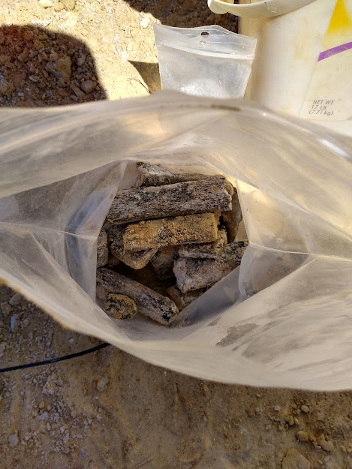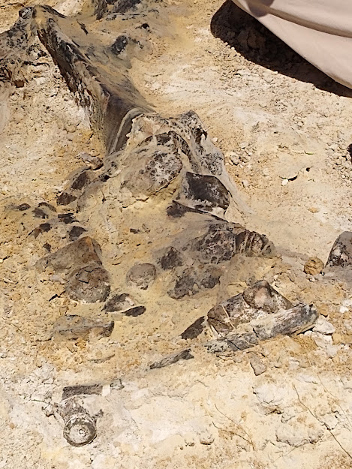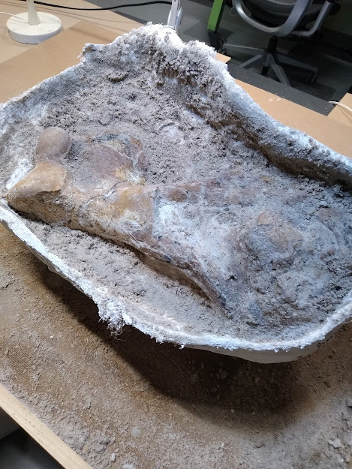
Digging at Montrook was a rewarding and fun experience. Learning the process of uncovering fossils millions of years old is a difficult and fascinating skill to perfect that involves many hours of observation in learning how to identify different soil and fossil types while mitigating damage to the specimens. I went for a full 4 days at the site and 8 hours at the Lab uncovering specimens from their plaster casts. Digging at the site can be a monotonous process but making small discoveries and getting to see other people’s finds brings excitement to the day regardless of if you discover anything noteworthy or not.
On the first day digging, I learned how fragile bones can be. Some of it in the wettest areas of the site had the consistency of soggy wood and was nearly impossible to salvage. Other pieces could be thin like fish scales and very easy to break with the wrong move. Despite these challenges, I found many other discoveries that were solid in consistency and easy to excavate. On the third day of digging, I found a finger bone and a set of broken rib bones on the fourth day.
Identifying the soils, sands, and clays at the digging site or within a cast were also crucial to understand to dig out the bone successfully. Being able to identify bone from soil can be incredibly difficult in some cases and you need to look at the piece you’re holding closely to identify marrow or a grain pattern that signifies bone. In the lab I uncovered two softshell turtle shells, a rhinoceros humerus, and a rhinoceros vertebra from their casts and created a cast of my own at the Montbrook site.
Everything took hours of careful digging, brushing, and wetting that reminded me of processes used to create intricate sculptures. The only difference here is that instead of sculptures being created, these beautiful bone “sculptures” are being uncovered.

